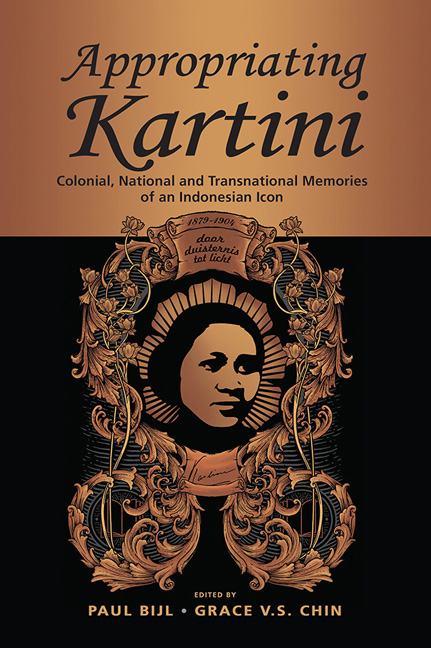Book contents
- Frontmatter
- Contents
- Acknowledgments
- The Contributors
- 1 Introduction
- 2 Crafting Reform: Kartini and the Imperial Imagination, 1898–1911
- 3 Hierarchies of Humanity: Kartini in America and at UNESCO
- 4 Ambivalent Narration: Kartini’s Silence and the Other Woman
- 5 Unpacking a National Heroine: Two Kartinis and Their People 103
- 6 Call me Kartini? Kartini as a Floating Signifier in Indonesian History
- 7 Kartini and the Politics of European Multiculturalism
- 8 Afterword
- Index
7 - Kartini and the Politics of European Multiculturalism
Published online by Cambridge University Press: 02 April 2020
- Frontmatter
- Contents
- Acknowledgments
- The Contributors
- 1 Introduction
- 2 Crafting Reform: Kartini and the Imperial Imagination, 1898–1911
- 3 Hierarchies of Humanity: Kartini in America and at UNESCO
- 4 Ambivalent Narration: Kartini’s Silence and the Other Woman
- 5 Unpacking a National Heroine: Two Kartinis and Their People 103
- 6 Call me Kartini? Kartini as a Floating Signifier in Indonesian History
- 7 Kartini and the Politics of European Multiculturalism
- 8 Afterword
- Index
Summary
Introduction
Luisa Passerini writes about the paradox of memory (and, we can add, forgetting) that we cannot look for something we lost unless we remember it at least in part (Passerini 2003, p. 239). When investigating cultural memory of colonialism in Europe, a first impression many people have is one of silence in the sense of oblivion (Ricoeur 2004): colonialism, in this conception, has vanished without a trace. In the Netherlands, people have claimed that Dutch colonialism in Indonesia is not taught in high schools, not talked about in the media, that photographs of colonial atrocities committed by the Dutch colonial army have been swept under the carpet and that the voices of those once colonized by the Dutch are never heard in the Netherlands. Yet if we investigate specific places and communities, a different picture emerges: histories of Dutch colonialism have been part of the school exams since the 1970s, colonial “scandals” (e.g. abusive labour conditions of coolies in colonial Indonesia) have been reported upon in newspapers since the nineteenth century, photographs of colonial atrocities were widely published and distributed in the early twentieth century, and the Netherlands has a rich tradition of publishing Indonesian authors, both originally writing in Dutch and in translation (Bijl 2012, 2015). How can we account for this impression of silence and this abundance of sounds?
In this Chapter, analysing current cultural memories of Kartini in Dutch contexts, I will argue that in investigating silences we need to pay attention to location as both sounds and silences are always unevenly distributed: while in certain locations there can be almost a cacophony of sounds, in others utter silence can be encountered. Second, I want to show how silences, once they have occurred or been produced, change position and meaning over time, sometimes being perpetuated and repeated, sometimes changing character as they move across contexts. By investigating these two aspects, I want to draw attention to silence's spatial (synchronic) and temporal (diachronic) dimensions. In this Chapter, I will mainly focus on a prize named after Kartini which has been awarded in the city of The Hague since 2001 to stimulate emancipation of, at first, Dutch women of colour but eventually, at least in theory, everybody contributing to the emancipation of anybody. Silence as a phenomenon can be connected in two ways to this prize, one spatial, the other temporal.
- Type
- Chapter
- Information
- Appropriating KartiniColonial, National and Transnational Memories of an Indonesian Icon, pp. 157 - 174Publisher: ISEAS–Yusof Ishak InstitutePrint publication year: 2020

